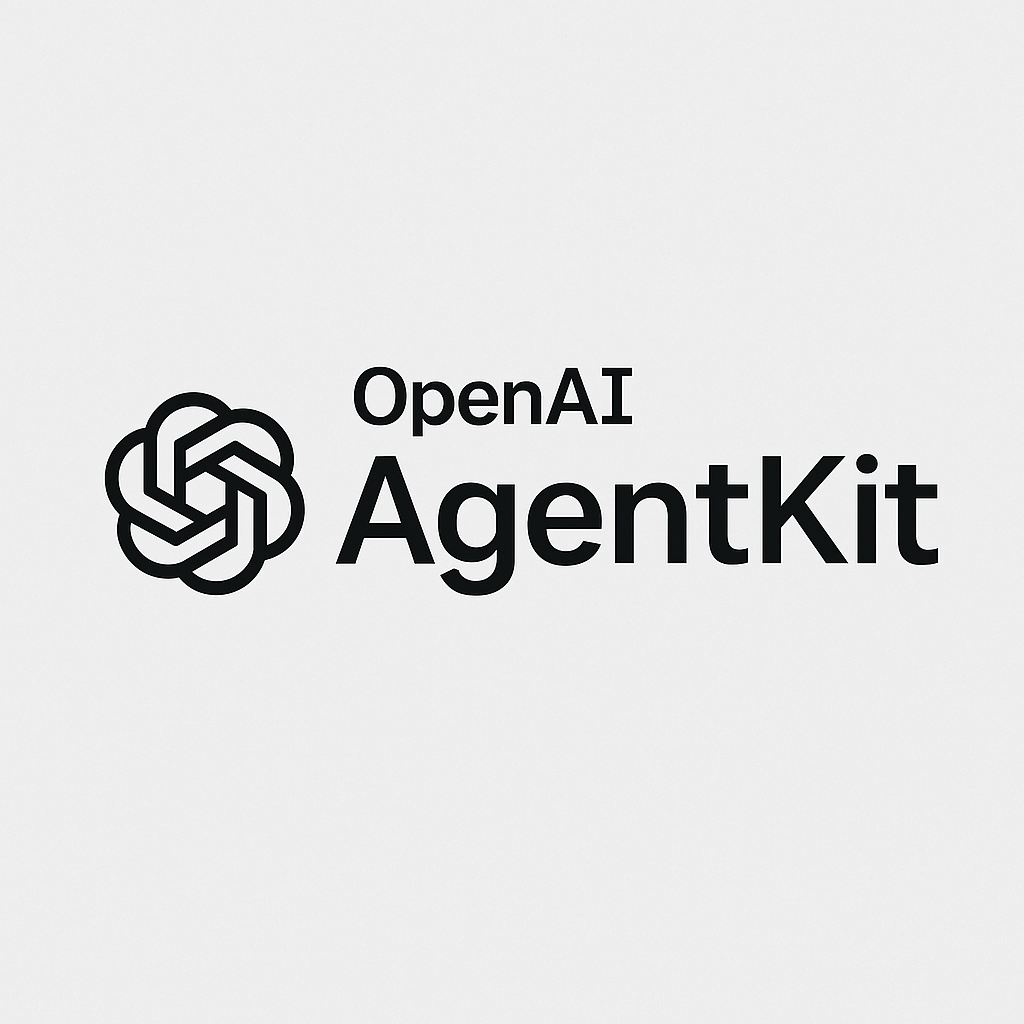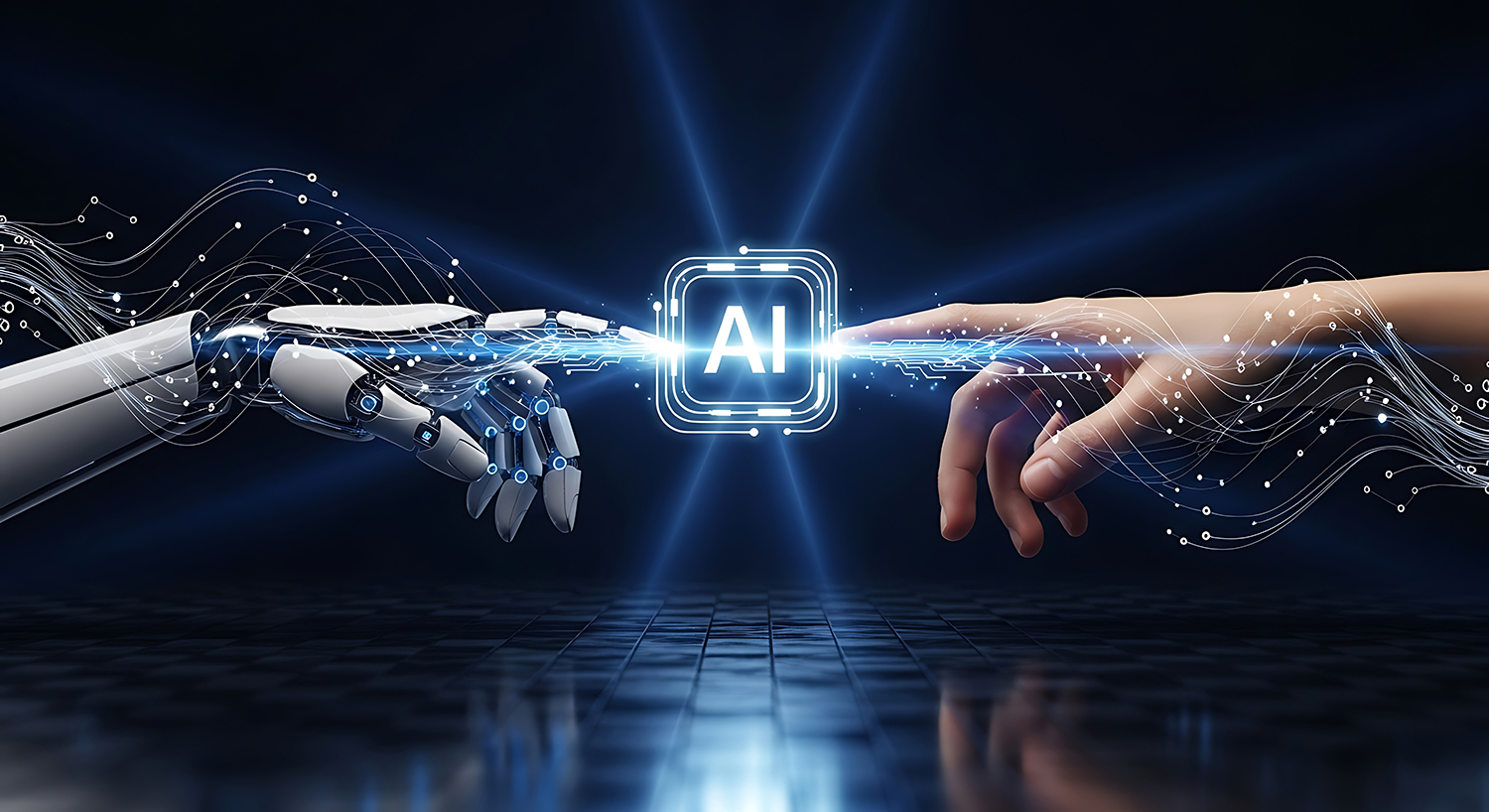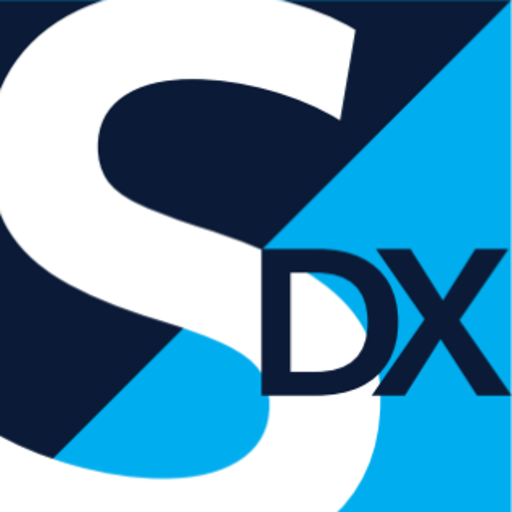AI for B2B Sales Enablement: Complete Guide 2025
Learn how AI transforms B2B sales enablement with tools for call prep, competitive battle cards, and content creation. Includes implementation roadmap and ROI measurement framework.

Last Updated: October 2025
Key Takeaways
AI sales enablement tools are changing how B2B sales teams prepare for calls, create content, and close deals. Instead of reps spending hours researching prospects and building decks, AI handles the heavy lifting while sales focuses on conversations. This guide covers what AI sales enablement actually means, which tools matter most, and how to implement them without disrupting your existing sales process.
Quick Answer: AI sales enablement uses artificial intelligence to automate and improve the tools, content, and training that help sales teams sell more effectively. This includes automating prospect research, generating personalized sales content, analyzing call recordings for coaching insights, and keeping competitive information up to date.
What Is AI Sales Enablement?
AI sales enablement is using artificial intelligence to automate the tasks and processes that help sales teams perform better. This means automating prospect research, generating sales content, analyzing conversations for coaching opportunities, and keeping competitive intel current.
Traditional sales enablement gives reps static resources like pitch decks, battle cards, case studies, and playbooks. Someone on the marketing or sales ops team creates these, distributes them, and hopes reps use them. Updates happen manually when someone notices information is outdated.
AI sales enablement makes these resources dynamic and personalized. A rep opens a battle card and sees information specific to the prospect they're talking to right now, not generic competitor comparisons. They request a proposal and get one customized to this buyer's industry, pain points, and use case in minutes instead of hours.
The difference matters because B2B buying has gotten more complex. Buying committees are larger, sales cycles are longer, and buyers do more research before talking to sales. Reps need better tools to compete.
How AI Sales Enablement Works
AI sales enablement platforms connect to your existing sales tech stack: CRM, conversation intelligence tools, content management systems, and data providers. They pull information from these sources, analyze it, and generate outputs that help reps sell.
The AI might scan a prospect's website, recent news, LinkedIn activity, and tech stack, then write a personalized email referencing specific challenges that prospect likely faces. Or it might listen to a sales call, identify objections the rep struggled with, and suggest training resources or better responses.
These systems learn over time. When certain messaging works better for specific buyer personas or industries, the AI picks up on these patterns and adjusts recommendations. When competitive objections change, the system updates battle cards automatically based on what it's hearing in calls.
If you've already explored AI agents for B2B marketing, you'll notice sales enablement AI works similarly but focuses specifically on helping reps have better conversations and close more deals.
Why Sales Teams Need AI Enablement Now
Sales teams have had enablement tools for years. Why does AI matter now?
The Research Time Problem
B2B sales reps spend 21% of their day just researching prospects and accounts, according to research from HubSpot. That's more than a full day every week not spent talking to buyers.
They're looking up company information, reading recent news, checking LinkedIn profiles, reviewing tech stacks, finding mutual connections, and trying to understand the prospect's current situation. All of this happens before the first call.
AI sales enablement tools do this research automatically. A rep clicks on an account in their CRM and sees a summary of everything relevant: recent funding rounds, new executive hires, tech stack details, pain points based on industry, relevant case studies. Research time drops from an hour to five minutes.
The Personalization Expectation
Buyers expect personalized outreach now. Generic "I noticed you work in SaaS" emails get deleted. But creating genuine personalization at scale is impossible manually.
Sales reps can't write unique emails for 50 prospects daily while also doing calls, demos, and follow-ups. So they use templates, which buyers recognize immediately and ignore.
AI enablement tools generate genuinely personalized content at scale. Each email references specific details about that prospect's company, role, and likely challenges. Each proposal includes relevant case studies from similar companies. Each follow-up addresses points raised in previous conversations.
This level of personalization used to only work for enterprise deals where reps had time to craft everything custom. AI makes it economical for the entire pipeline.
The Knowledge Gap Issue
Sales teams struggle to keep everyone updated on product changes, competitive moves, new messaging, and best practices. Someone launches a new feature and sales keeps pitching the old version for weeks because they didn't know or didn't understand how to position it.
Traditional enablement tries to solve this with training sessions, updated docs, and Slack announcements. Reps are focused on selling and not updating the activities in Salesforce.
AI enablement embeds current information directly into sales workflows. A rep is on a call, a competitor comes up, they pull up the battle card and see information updated yesterday based on the competitor's latest product announcement. They're drafting a proposal and the AI suggests positioning around the new feature they didn't know about yet.
The knowledge gap closes because information appears when reps need it, in their actual workflow, not in a training session they half-pay attention to.
The Coaching Scalability Challenge
Sales managers can't listen to every call their reps take. They might review one or two calls per rep per week if they're diligent. That means most conversations never get feedback.
Reps develop bad habits, miss objection handling opportunities, and don't know what's working versus what's not. The best reps figure it out through trial and error. Average reps stay average.
AI conversation intelligence tools analyze every call automatically. They spot patterns in what top performers do differently, identify objections reps struggle with, and flag coaching opportunities for managers. Managers can focus on the calls that actually need attention instead of randomly sampling.
This scales coaching in a way that wasn't possible before. Every rep gets insights on their performance, not just the ones whose calls the manager happened to review that week.
7 AI Sales Enablement Tools Every B2B Team Should Use
Different sales challenges need different AI tools. Here's what matters most for B2B teams.
1. Conversation Intelligence Platforms
Tools like Gong, Chorus.ai (now part of ZoomInfo), and Clari record sales calls, transcribe them, and analyze conversations for insights.
They track talk time ratios, question patterns, competitor mentions, objections raised, next steps discussed, and buying signals. They identify what top performers do differently and flag risks in deals based on conversation patterns.
Sales managers get alerts when deals show warning signs: buyer engagement dropping, champion going quiet, competition mentioned more frequently. Reps get automatic summaries of calls with action items extracted.
These platforms also build libraries of best call examples. A rep struggling with a specific objection can search for calls where someone handled it well and hear how they did it.
2. AI-Powered Prospect Research Tools
Platforms like Clay, Clearbit, and Apollo.io use AI to enrich prospect data and surface insights automatically.
They pull information from dozens of sources: company websites, news articles, job postings, tech stack data, funding databases, social media, and more. Then they synthesize this into digestible summaries.
A rep researching an account sees recent funding rounds, new executive hires, job openings that might indicate pain points, technologies they use, company growth trajectory, and relevant news, all in one place.
The AI also identifies which accounts are showing buying intent based on website visits, content engagement, and search behavior. Reps can prioritize outreach to accounts actually in-market rather than cold calling randomly.
3. Sales Content Generation Tools
Tools like Copy.ai, Jasper, and purpose-built sales enablement platforms use large language models to generate sales content quickly.
Reps input basic information about a prospect and what they're trying to accomplish, and the AI generates personalized emails, follow-up sequences, proposal sections, or presentation outlines.
The content isn't perfect out of the box. Reps still need to review and edit. But it cuts the time to create personalized outreach from 30 minutes to 5 minutes. Instead of staring at a blank page, reps start with a solid draft they can refine.
These tools learn from what works. When emails with certain characteristics get higher response rates, the AI incorporates those patterns into future suggestions.
4. Competitive Intelligence Automation
Platforms like Klue and Crayon use AI to track competitor activities automatically and keep battle cards current.
They monitor competitor websites, social media, job postings, customer reviews, pricing pages, and product updates. When something meaningful changes, they alert relevant team members and update battle cards automatically.
Sales reps access battle cards during calls and see current information about competitor positioning, pricing, strengths, weaknesses, and objection handling. The information stays fresh because the AI updates it continuously instead of relying on someone to manually revise docs quarterly.
Competitive intelligence automation can also track messaging changes across multiple competitors simultaneously, giving your team advance warning when competitive positioning shifts.
5. AI Meeting Assistants and Schedulers
Tools like Calendly (with AI features), Chili Piper, and meeting intelligence platforms handle scheduling complexity and meeting preparation automatically.
They coordinate availability across multiple participants, suggest optimal meeting times based on past patterns, send reminders, and handle rescheduling. Some qualify leads before booking sales time by asking pre-meeting questions.
AI meeting assistants also prepare briefing documents before calls. They pull together everything relevant about the prospect, previous interactions, open opportunities, and suggested talking points. Reps show up to calls better prepared without spending time creating briefing docs themselves.
6. Sales Training and Coaching Platforms
Platforms like Mindtickle, Allego, and Rehearsal use AI to personalize sales training and provide practice opportunities.
They analyze individual rep performance data and recommend specific training modules based on gaps. A rep who struggles with discovery questions gets different training than one who needs help with pricing objections.
AI-powered role-play features let reps practice conversations with AI buyers that respond realistically to different approaches. The AI provides feedback on what worked and what didn't, so reps can practice without using manager time or bothering teammates.
These platforms also use spaced repetition to improve knowledge retention. Instead of one-time training dumps that reps forget, the AI surfaces key concepts repeatedly over time in ways that help information stick.
7. Proposal and Document Automation
Tools like PandaDoc, Proposify, and Qwilr use AI to generate customized proposals and sales documents quickly.
Reps input deal details and the platform generates a proposal pulling in relevant case studies, pricing configurations, terms, and content sections appropriate for this buyer's industry and use case.
The AI learns which content sections correlate with won deals and suggests including them in future proposals. It tracks how buyers interact with proposals (which sections they read, how long they spend, who else they share it with) and alerts reps to engagement signals.
This cuts proposal creation time from hours to minutes and improves proposal quality by ensuring every document includes the most effective content for that specific situation.
AI for Sales Call Preparation & Research
Call preparation is where AI sales enablement delivers immediate time savings. Here's how it works in practice.
Automated Account Research
Before AI, call prep meant opening multiple tabs. Company website, LinkedIn, Crunchbase, news search, tech stack lookup tools, review sites. You'd piece together information manually, take notes, then hopefully remember the relevant details when the call started.
AI research tools pull this information automatically. You click on an upcoming meeting in your calendar and see:
Company overview with employee count, revenue range, and growth trajectory. Recent news including funding rounds, acquisitions, executive changes, and product launches. Key people you'll be talking to with their backgrounds, how long they've been at the company, and previous roles. Tech stack details showing what tools they currently use that might integrate with your solution. Pain points common to their industry and company stage based on analysis of similar companies.
Instead of spending 30-45 minutes researching before each call, reps spend 5 minutes reviewing the AI-generated brief.
Real-Time Call Assistance
Some AI tools provide real-time assistance during calls. They listen to the conversation, transcribe it live, and surface relevant information as certain topics come up.
Buyer mentions a competitor, and your battle card for that competitor appears on screen. Buyer asks about a feature, and documentation or talking points for that feature pop up. Buyer raises an objection you've heard before, and the system shows you how top performers have handled it.
This works like having a senior rep sitting next to you during every call, feeding you information as you need it. New reps get the benefit of institutional knowledge that usually takes months or years to build.
Post-Call Follow-Up Automation
After calls, AI tools generate summaries automatically. They extract action items, identify next steps discussed, flag risks or opportunities mentioned, and draft follow-up emails.
The rep reviews the summary, makes any corrections, and sends the follow-up. What used to take 15-20 minutes per call now takes 2-3 minutes.
These summaries also get logged to your CRM automatically with proper formatting and categorization. The information actually ends up in your CRM instead of in the rep's head or scattered across email threads.
AI Agents for Competitive Battle Cards
Competitive battle cards are critical sales enablement assets, but they're painful to maintain. By the time you update them, information is outdated again. AI changes this.
Continuous Competitive Monitoring
AI competitive intelligence platforms monitor competitor activities continuously. They watch:
Website and pricing page changes. Product updates and new feature announcements. Job postings that might indicate strategic direction. Customer review patterns and sentiment changes. Social media messaging and positioning shifts. Press releases and media coverage. Patent filings and technical publications.
When competitors make meaningful moves, the system alerts relevant stakeholders immediately rather than waiting for someone to stumble across the information weeks later. Competitive LinkedIn monitoring can surface signals from competitor activity on social platforms.
Automatic Battle Card Updates
Instead of someone manually updating battle cards quarterly, AI systems update them continuously based on new information.
A competitor launches a new feature and within hours your battle card reflects this. It includes the feature description, how it compares to your offering, talking points for why your approach is better, and responses to objections buyers might raise.
The system also tracks win/loss data tied to competitive situations. When certain messaging consistently wins against specific competitors, that information gets incorporated into battle card recommendations.
Contextual Battle Card Delivery
AI systems deliver battle card information contextually rather than making reps search for it. During a sales call, competitor gets mentioned, and the relevant battle card appears automatically. Drafting a proposal for a deal with known competition, and the system suggests including specific comparison content that's worked in similar situations.
This means reps actually use competitive intelligence instead of it sitting in a SharePoint folder nobody visits. The information appears when and where they need it, in their actual workflow.
AI for Sales Content & Collateral Creation
Creating customized sales content for every deal used to be impossible at scale. AI makes it practical.
Personalized Email Generation
AI writing tools generate personalized outreach emails based on prospect research. You input the prospect's name and company, and the AI writes an email that:
References recent company news or developments. Mentions pain points common to their industry and company stage. Includes a relevant case study from a similar company. Suggests a specific meeting time based on the prospect's timezone.
The email isn't perfect, but it's 80% there. The rep makes minor edits rather than writing from scratch. This turns email creation from a 20-minute task into a 3-minute task.
More importantly, every prospect gets genuinely personalized outreach instead of obviously templated emails that get ignored.
Proposal and Deck Customization
AI document generation tools create customized proposals and pitch decks by pulling together relevant content sections based on deal parameters.
You specify the industry, company size, use case, and competitors involved, and the system generates a proposal including:
An executive summary customized to this buyer's likely priorities. Case studies from similar companies in the same industry. Product information focused on capabilities relevant to their use case. Pricing configured appropriately for their company size. ROI calculations using benchmarks from comparable customers.
What used to take 2-3 hours of copying and pasting from various documents, updating numbers, and making sure everything is consistent now takes 15 minutes of review and refinement.
Sales Collateral Updates
AI systems help keep sales collateral current by identifying outdated information automatically. They scan documents looking for:
Product claims that no longer match current capabilities. Competitive comparisons based on old information. Case study metrics that could be refreshed with more recent numbers. Statistics and research citations that have newer versions available.
The system flags these for updating rather than hoping someone notices collateral is stale. This keeps your sales team armed with current information instead of accidentally making claims that aren't true anymore.
Tools that find credible statistics can help ensure sales collateral includes current, properly cited data points.
Implementing AI Sales Enablement: Step-by-Step
Here's how to actually implement AI sales enablement without disrupting your existing sales process.
Phase 1: Assess Current State (Week 1-2)
Start by understanding where sales currently spends time and where AI could help most. Interview reps and managers about:
What tasks take the most time? What information do they wish they had easier access to? Where do new reps struggle most? What changes most frequently that's hard to keep updated?
Also audit your current tech stack and data quality. AI sales enablement tools need clean CRM data and integrations with existing systems to work well. If your data is messy, you'll need to address that.
Map out your sales process step by step. Where could AI add value at each stage? Prioritize based on time savings potential and adoption likelihood.
Phase 2: Choose Initial Use Case (Week 3)
Don't try to implement everything at once. Pick one high-impact, low-friction use case to start.
Good first implementations:
Conversation intelligence for automatic call summaries. Prospect research automation to save prep time. Meeting scheduling to reduce back-and-forth. Battle card updates to keep competitive intel current.
Bad first implementations:
AI writing tools that might make reps feel replaced. Major process changes requiring new workflows. Tools that need extensive data cleanup first.
Choose something that saves reps time without asking them to change their core workflow. You want quick wins to build momentum.
Phase 3: Pilot with Small Group (Week 4-8)
Run a pilot with a small group of reps before rolling out broadly. Pick reps who are:
Open to trying new tools. Willing to provide honest feedback. Representative of your broader team. Influential with their peers.
Set clear success metrics. What would make this pilot successful? Time saved per rep? Increased activity levels? Higher win rates? Better CRM data quality?
Collect feedback weekly. What's working? What's confusing? What's getting in the way? Use this to refine implementation before broader rollout.
Phase 4: Refine and Train (Week 9-12)
Based on pilot feedback, refine the implementation. Adjust configurations, integrate with additional systems, update prompts or templates, create internal documentation.
Develop training materials covering:
What the tool does and why it helps. How to access and use it in daily workflow. Best practices from pilot users. Who to contact with questions.
Train managers first. They need to understand the tool well enough to support their teams and model usage themselves. If managers don't use it, reps won't either.
Phase 5: Broad Rollout (Week 13+)
Roll out to the full sales team with strong change management support:
Announce the rollout with clear explanation of benefits. Provide hands-on training sessions, not just documentation. Make usage visible and celebrated in team meetings. Share success stories from early adopters. Address concerns and questions proactively.
Monitor adoption metrics closely. Who's using the tool? Who's not? Why? Provide extra support to those struggling.
Collect ongoing feedback and continue refining. AI sales enablement isn't a set-it-and-forget-it implementation. You'll continuously improve based on what you learn.
Implementation Checklist
Here's a downloadable checklist for AI sales enablement implementation:
Pre-Implementation:
- Interview sales team about current pain points
- Audit CRM data quality
- Document current sales process
- Identify integration requirements
- Set success metrics
Pilot Phase:
- Select pilot group
- Configure tool for pilot
- Train pilot users
- Collect weekly feedback
- Document lessons learned
Rollout Phase:
- Refine configuration based on pilot
- Create training materials
- Train managers first
- Conduct team training sessions
- Monitor adoption metrics
- Provide ongoing support
Measuring AI Sales Enablement ROI
AI sales enablement requires investment in tools, implementation time, and training. Here's how to measure whether it's paying off.
Time Savings Metrics
Track how much time reps save on administrative tasks:
Research time per call before vs. after. Proposal creation time per deal. CRM data entry time weekly. Meeting scheduling back-and-forth.
Multiply time saved per rep by number of reps and hourly cost of sales time. Even small time savings add up quickly across a team.
A rep saving 5 hours per week is saving 260 hours per year. At a fully loaded cost of $75 per hour, that's $19,500 in cost savings per rep annually. For a team of 20 reps, that's $390,000 in annual savings.
Activity Level Changes
More time freed up should translate to more selling activities:
Calls per rep per week. Meetings booked. Proposals sent. Follow-up touchpoints completed.
If reps aren't increasing activity levels despite time savings, dig into why. Are they filling the time with other non-selling tasks? Is pipeline not deep enough to support more activity?
Conversion Rate Improvements
Better enablement should improve conversion at various sales stages:
Meeting acceptance rates from cold outreach. Discovery call to demo conversion. Demo to proposal conversion. Proposal to closed-won conversion.
Even small improvements in conversion rates compound significantly. A 5% improvement at each stage of a four-stage sales process increases overall conversion by over 20%.
Deal Velocity Changes
AI enablement should help deals move through pipeline faster:
Average days in each pipeline stage. Total sales cycle length. Time to first meeting after lead enters pipeline.
Faster deal velocity means sales capacity increases even without adding headcount. Your existing team closes more deals in the same time period.
Win Rate Analysis
Better competitive intelligence and personalization should improve win rates:
Overall win rate across all opportunities. Win rate in competitive situations specifically. Win rate by deal size, industry, or other segments.
According to research from Gartner, companies with mature sales enablement programs see win rates 15-20% higher than those without. AI enablement should drive similar or better improvements.
Revenue Impact
The ultimate measure is revenue impact:
Revenue per rep. Average deal size. Revenue growth rate. Customer acquisition cost.
Calculate the revenue impact by comparing performance before and after AI enablement implementation. Account for external factors like market conditions, product changes, and pricing adjustments.
A simple ROI calculation:
(Revenue increase + Cost savings - Implementation costs) / Implementation costs = ROI percentage
For example, if AI enablement costs $100,000 to implement (tools plus time) and drives $300,000 in additional revenue plus $150,000 in cost savings, your ROI is 350%.
Ready to implement AI sales enablement for your B2B team? AI Agent Strategy helps companies deploy AI-powered systems that reduce sales busywork while improving win rates and deal velocity across the sales organization.
Related Blogs Post

How to Build an AI Copilot for Demand Generation [2025 Guide]
Step-by-step guide to building an AI copilot for demand generation. Learn which platform to choose, how to set up integrations, and how to automate your demand gen workflow.

AI Agents for B2B Marketing: Complete 2025 Guide
Discover how AI agents transform B2B marketing operations. Learn about 8 types of marketing AI agents, real implementation examples, and how to choose the right tools for your team.

How I Stopped Generating AI Slop by Training Claude with Custom Skills
Building reusable "skills" for Claude eliminates repetitive prompting by encoding your style guidelines and standards into instruction files that load automatically. This systematic approach delivers consistent outputs and competitive advantage while competitors waste time with generic prompts.

OpenAI's AgentKit Proves We're at the Railroad Moment for Software
OpenAI's AgentKit launch proves AI agents are disrupting SaaS. Learn how marketing myopia explains why traditional software companies must redefine their business models or face obsolescence.

OpenAI AgentKit Just Reset AI GTM
OpenAI's AgentKit announcement on October 6, 2025 changed the conversation from "Can AI improve GTM?" to "How fast can you ship production agents?"

From AI Tool Sprawl to Strategic Networks: A Schön-Inspired GTM Framework
Despite 70% AI adoption in GTM workflows, companies struggle with conversions. This framework shows how to move from isolated AI tools to interconnected systems that deliver measurable results.

Power Your AI GTM Strategy by Recording Customer Phone Calls
To build an effective AI-driven Go-To-Market (GTM) strategy, start by recording customer calls.

AI Agent Strategy: Your Guide to GTM Excellence
The go-to-market landscape has fundamentally shifted. Today's top-performing organizations are leveraging AI agents to create competitive advantages, achieving outcomes to impact time savings per rep, increasing account coverage, and pipeline.

Signal-Based GTM: Key Insights from Clay's Sculpt 2025 in San Francisco
The AI hype in sales is settling into practical results. Companies are saving reps 10+ hours per week, hitting 72% account coverage instead of 19%, and building entirely new roles to make it happen.



